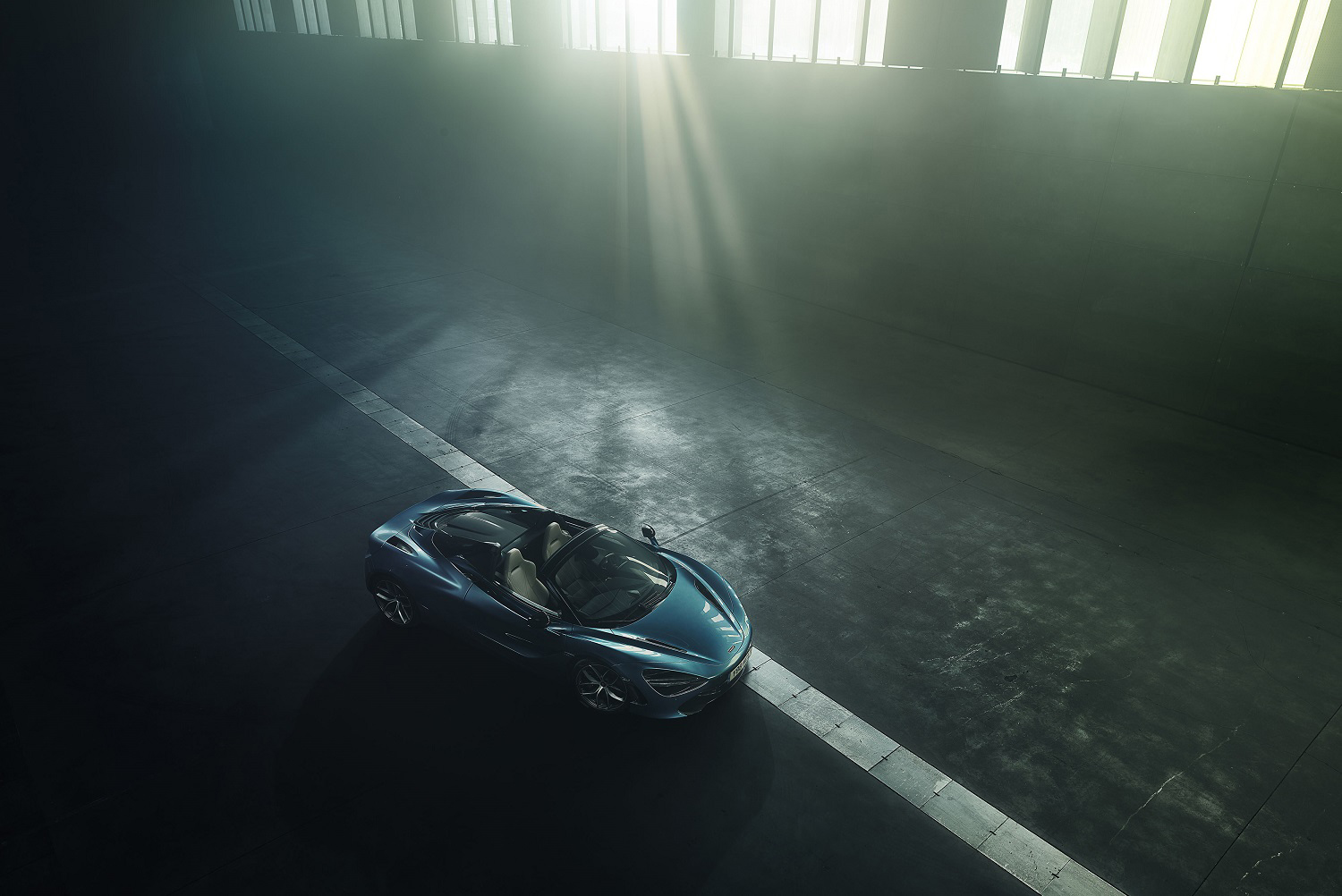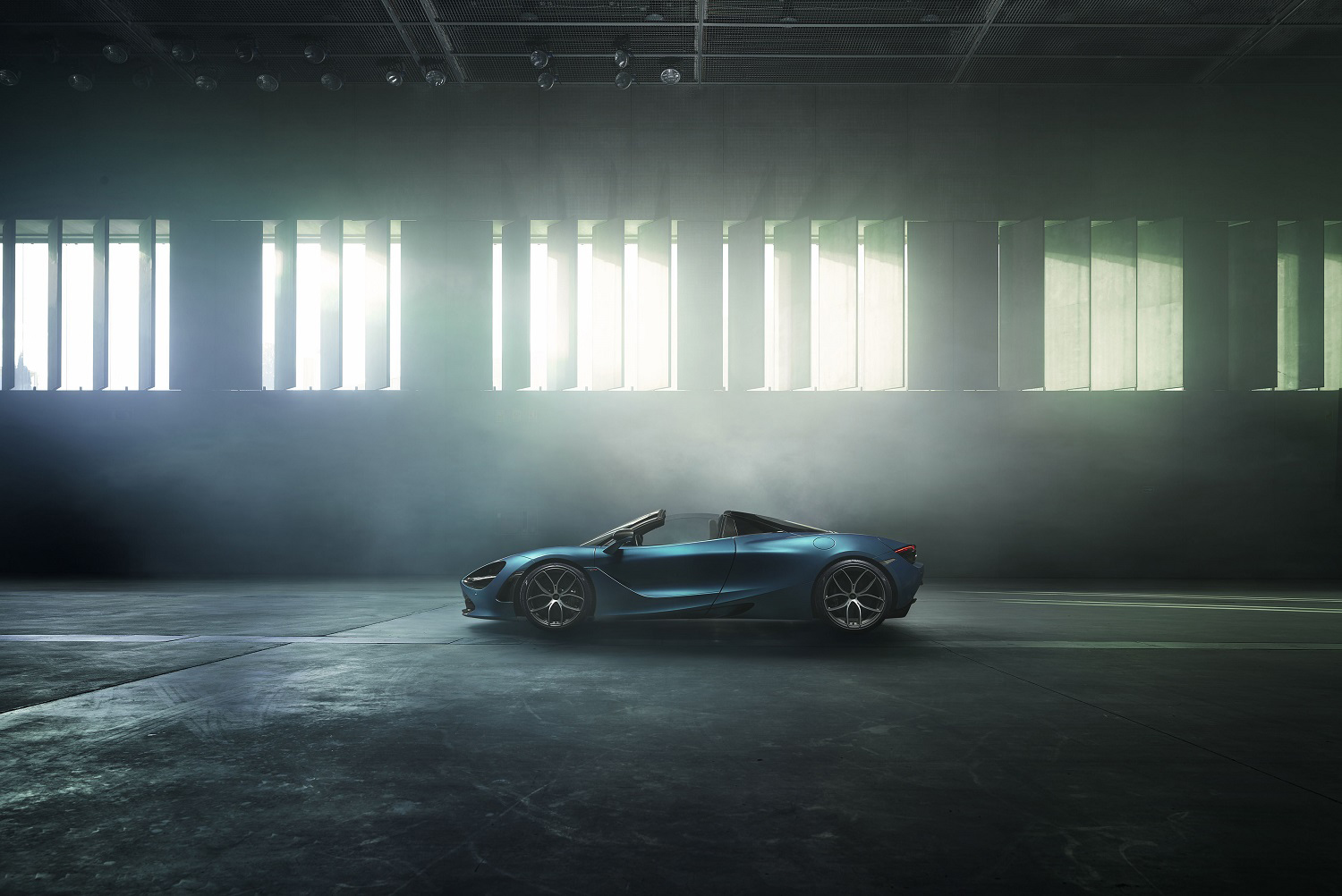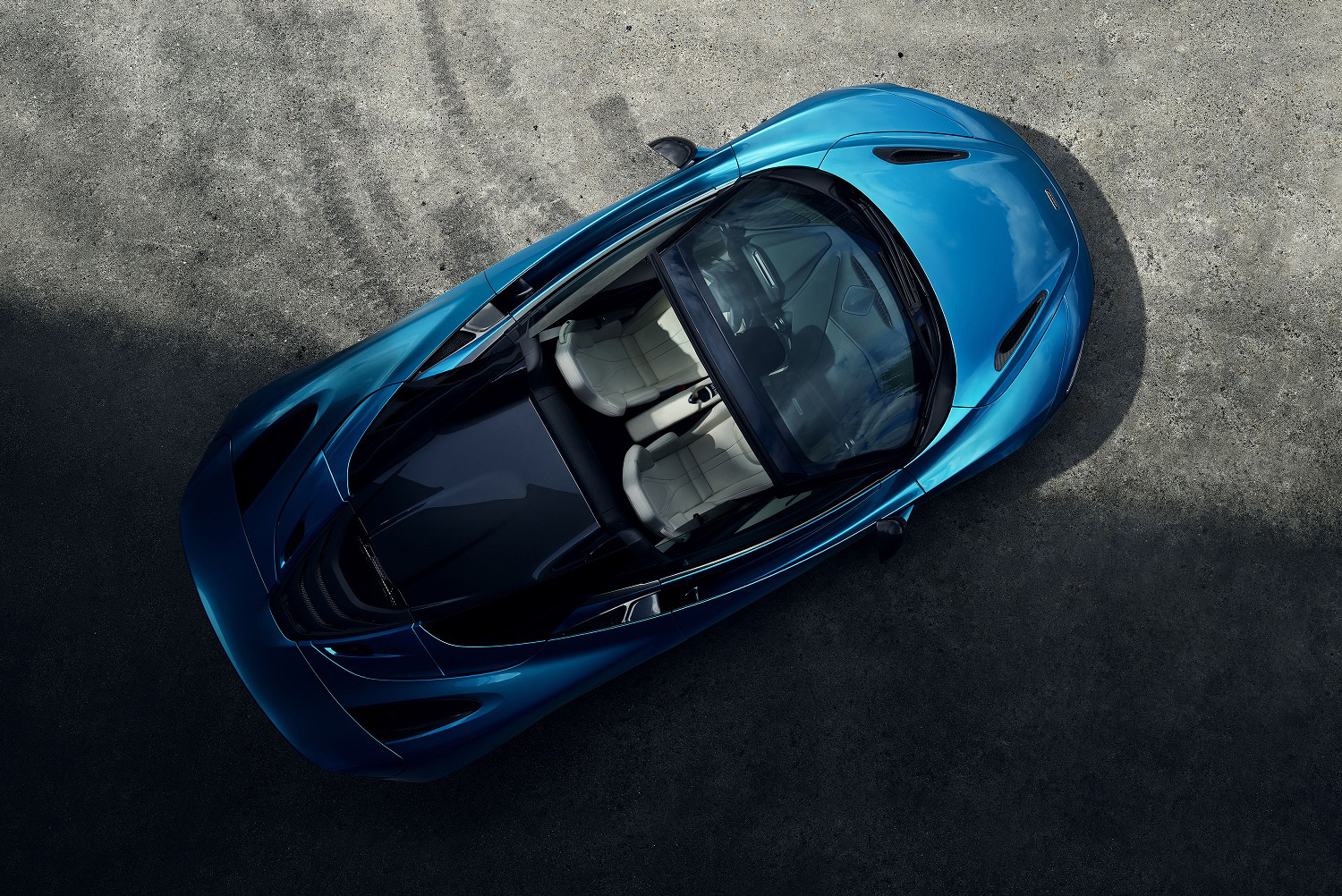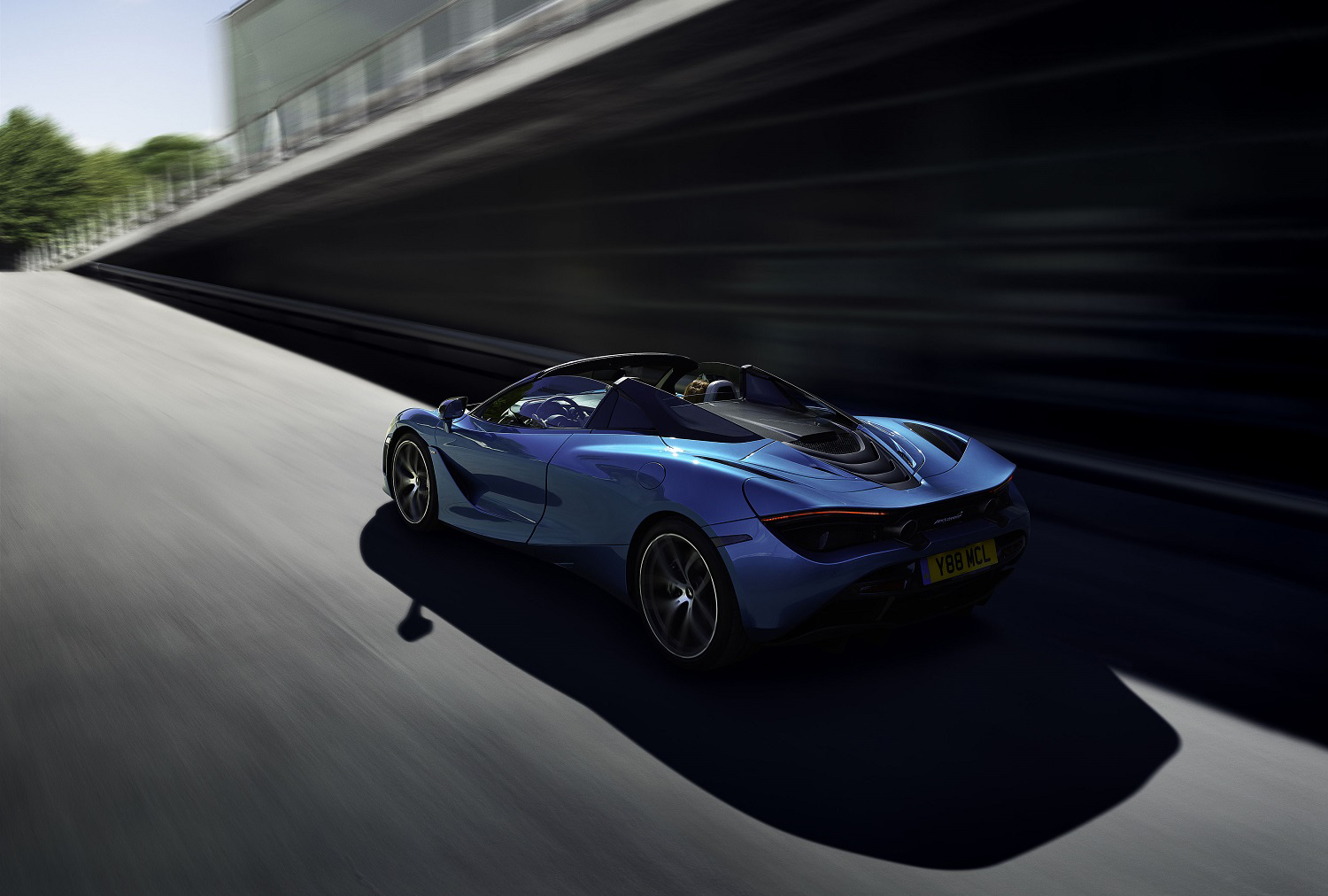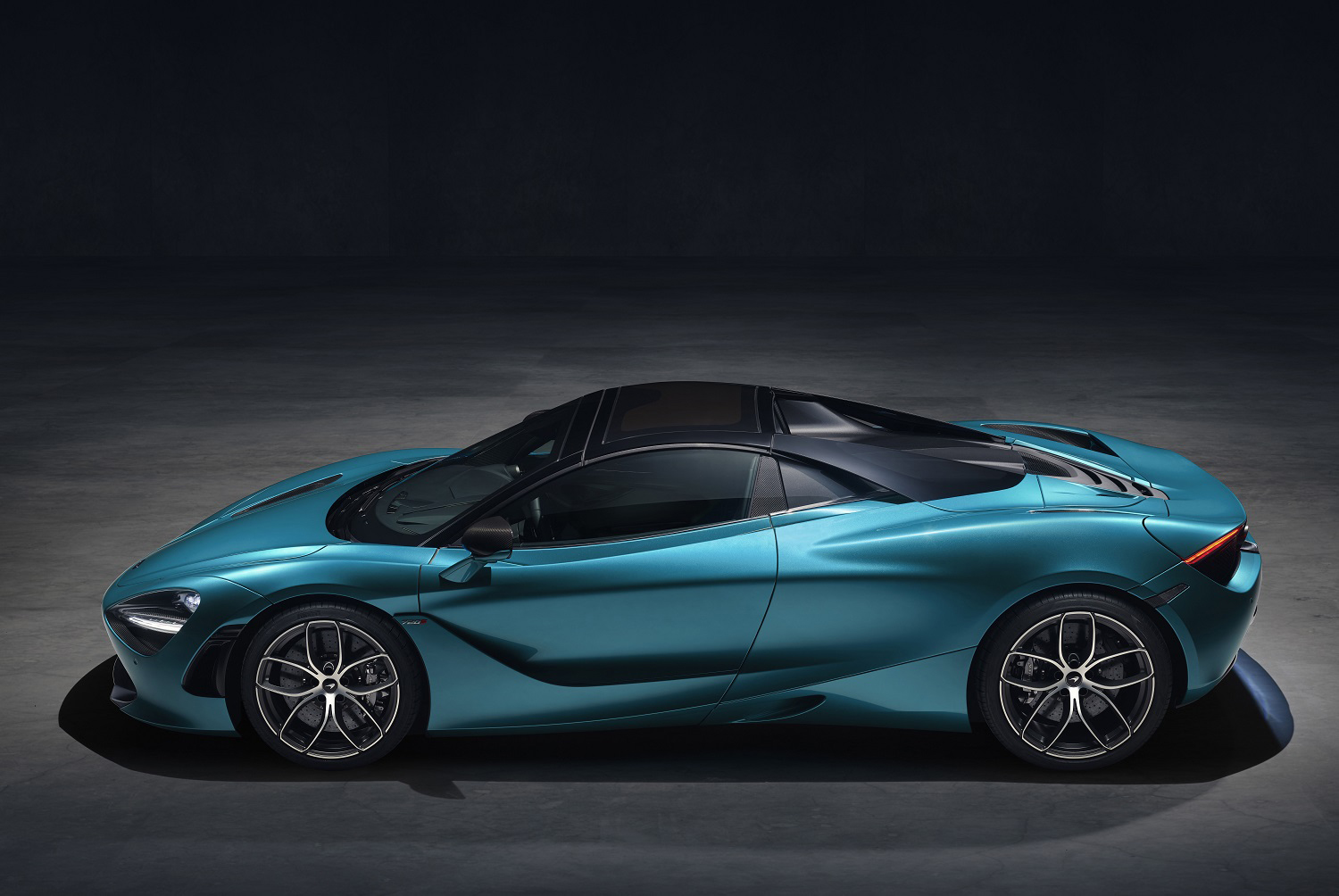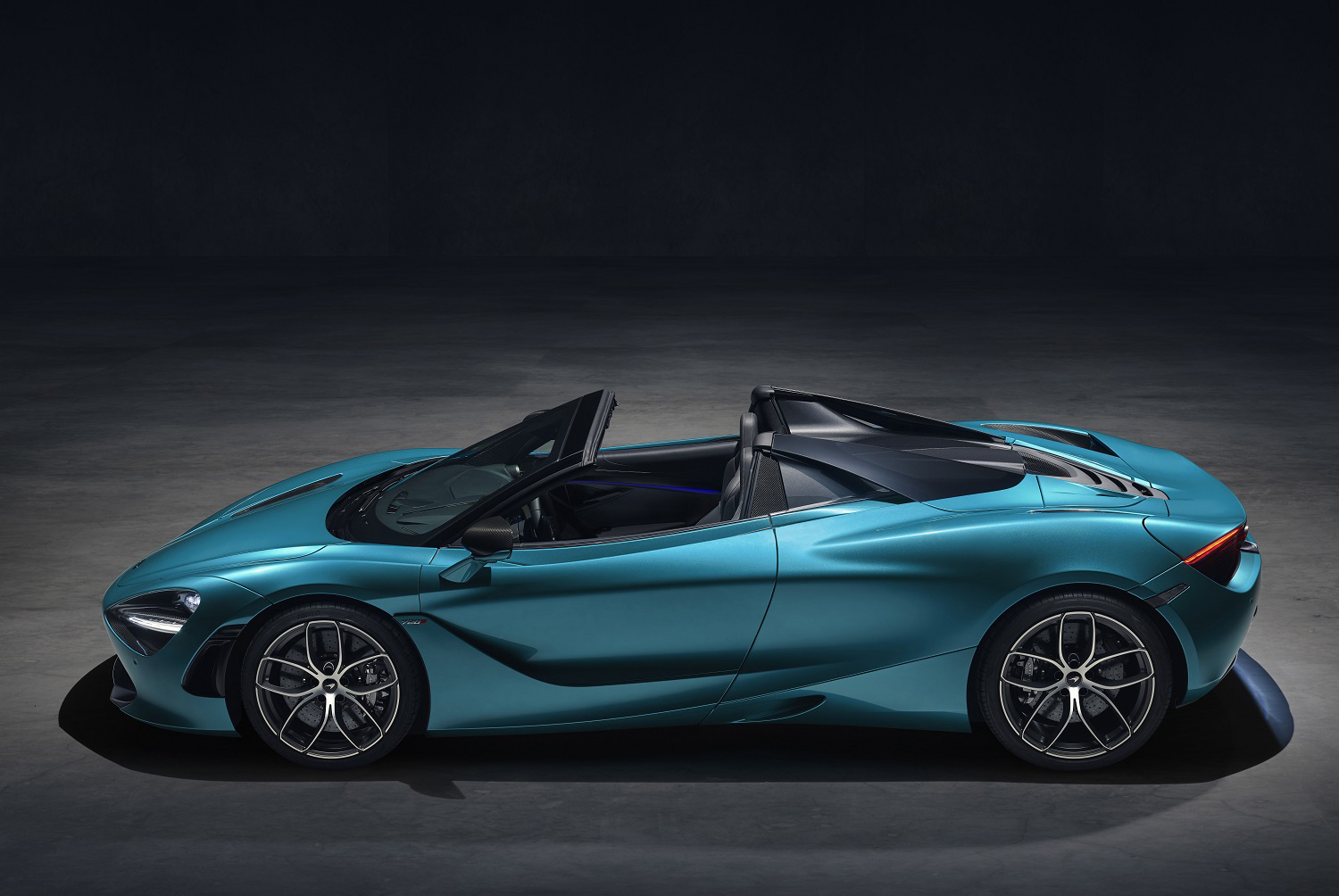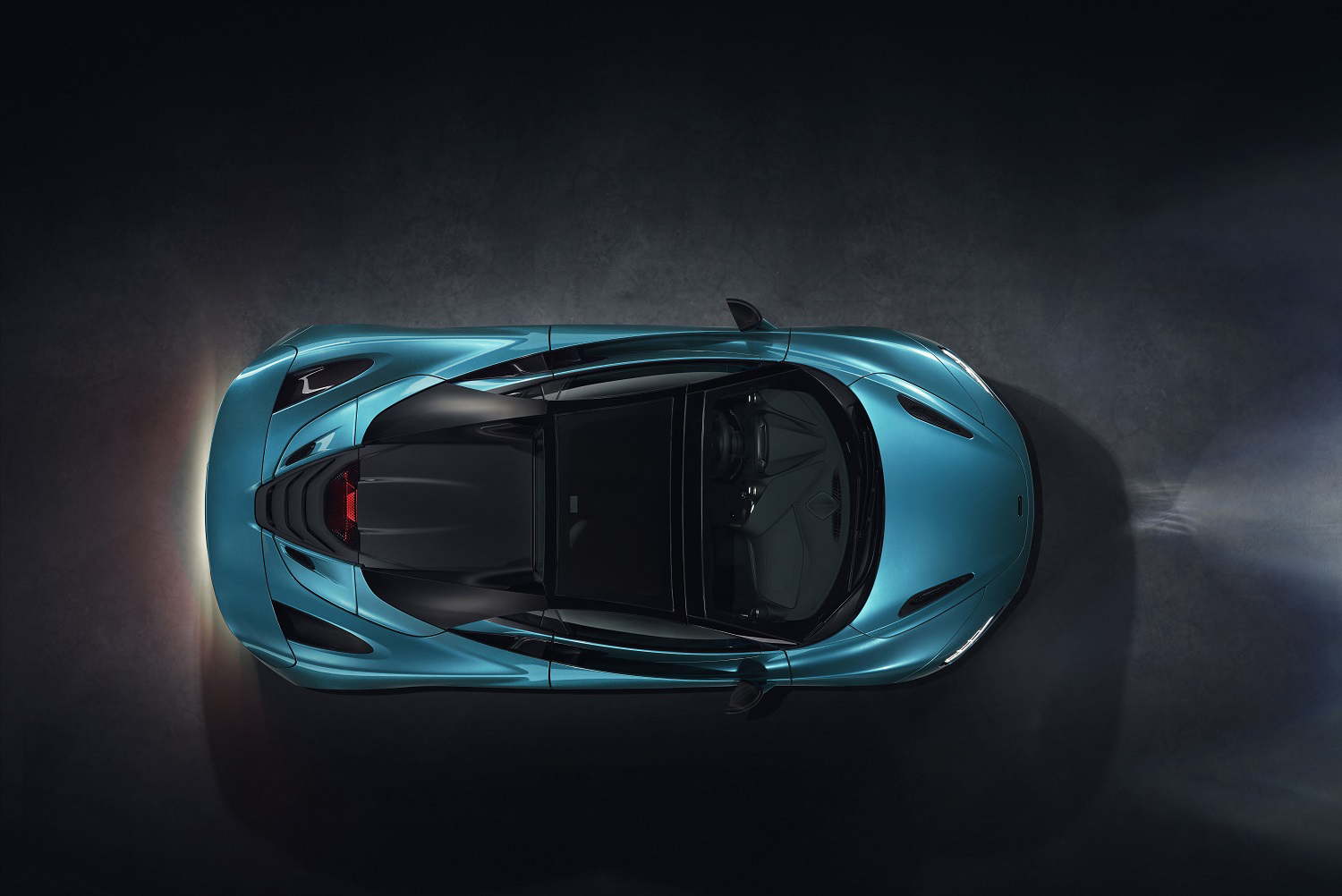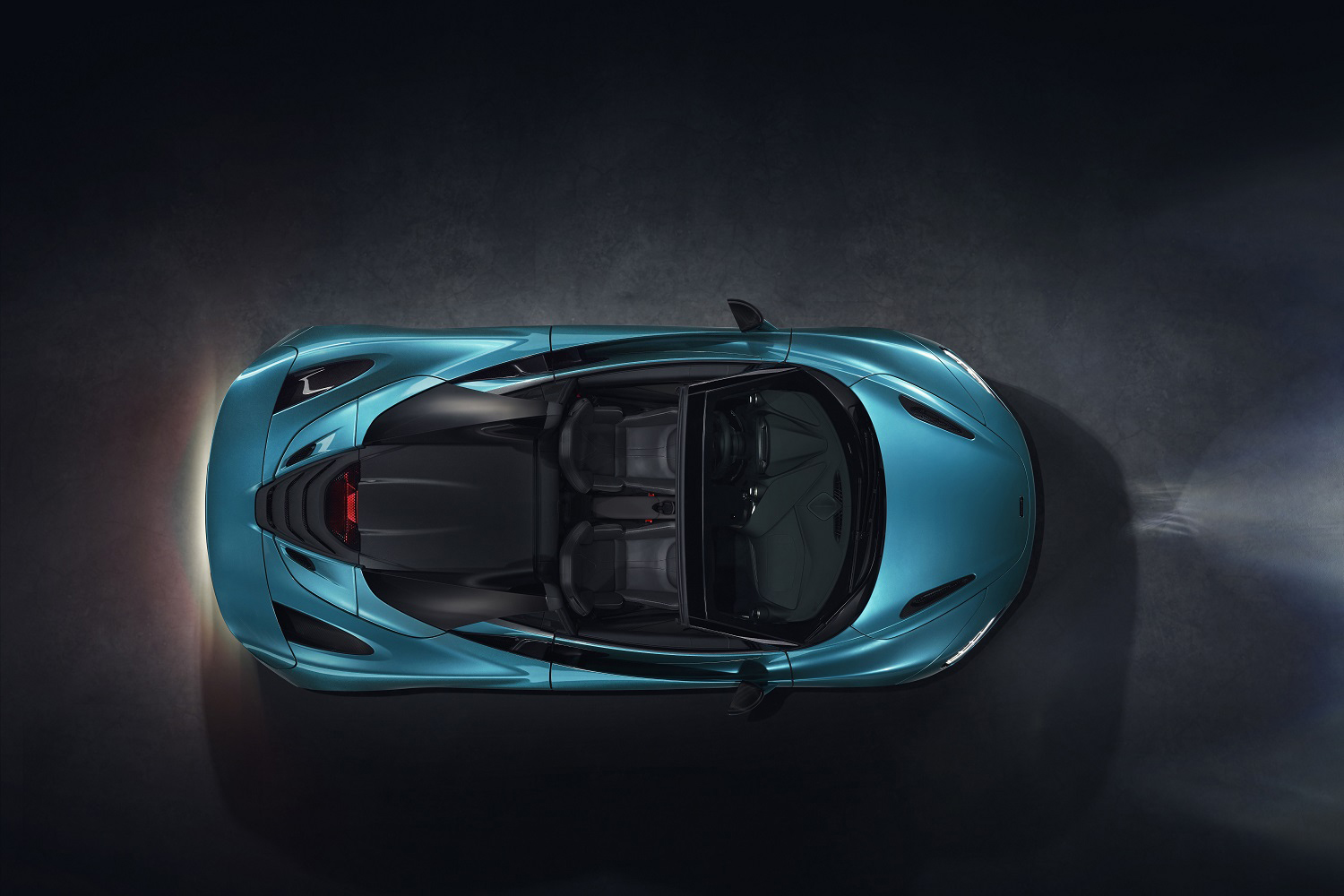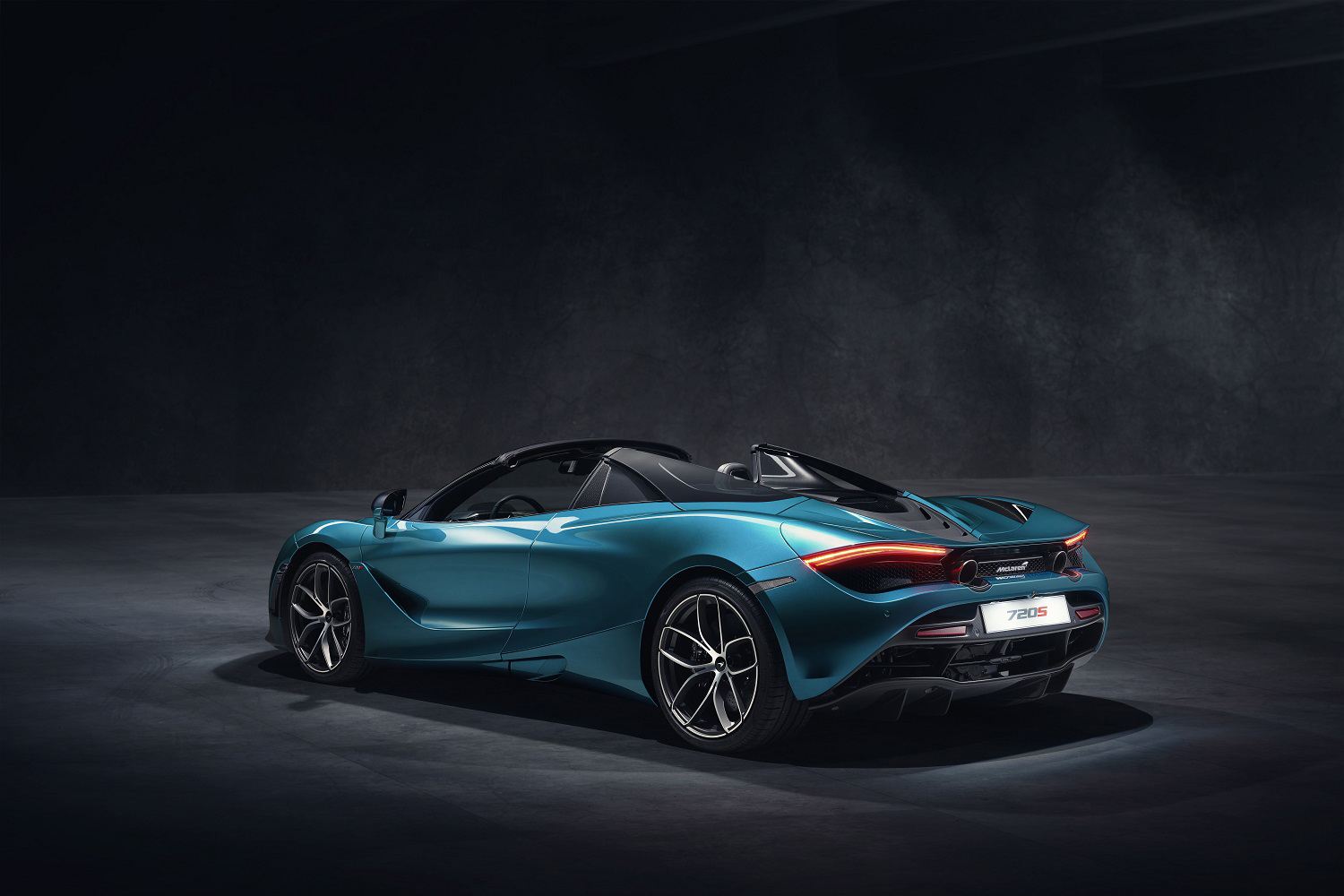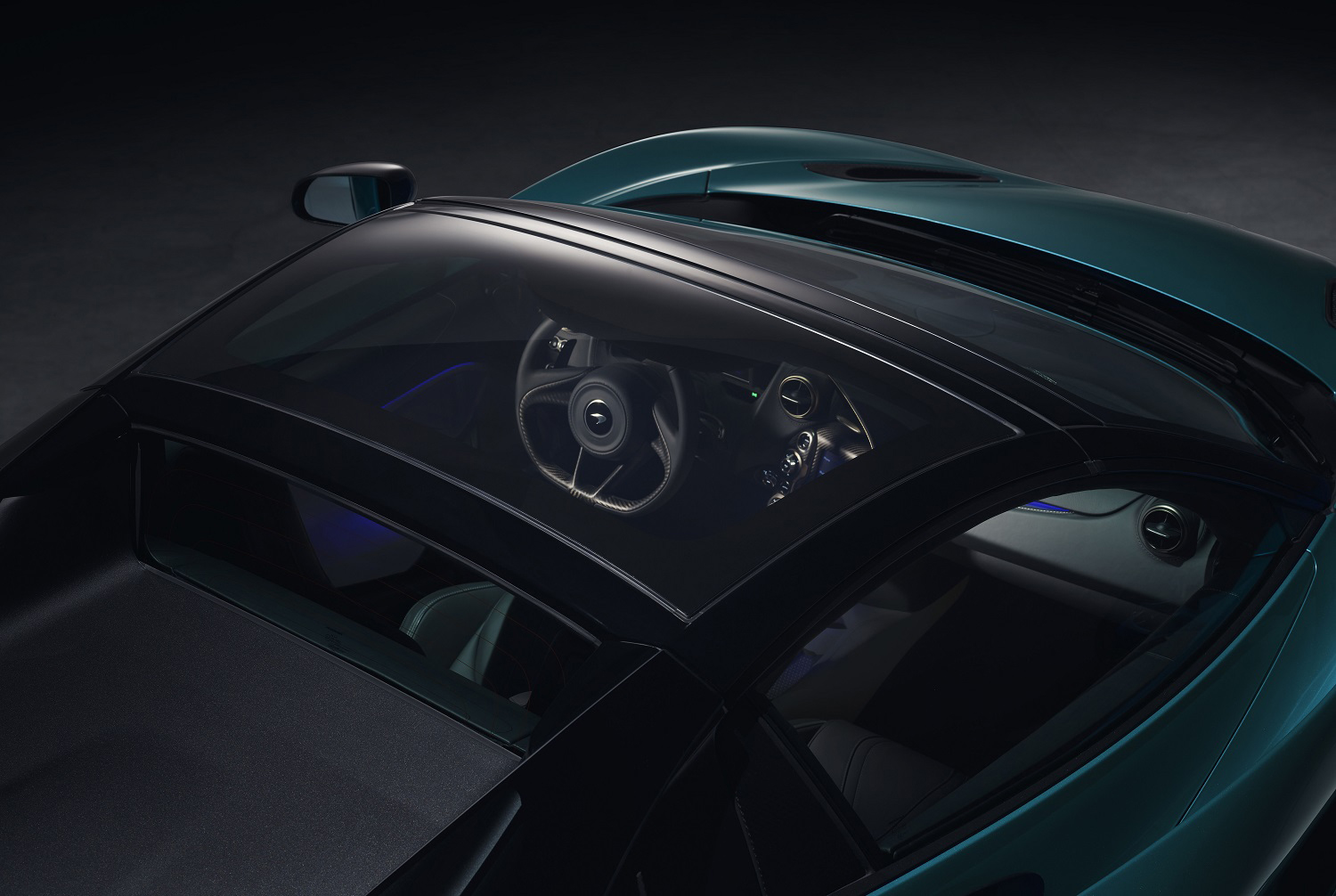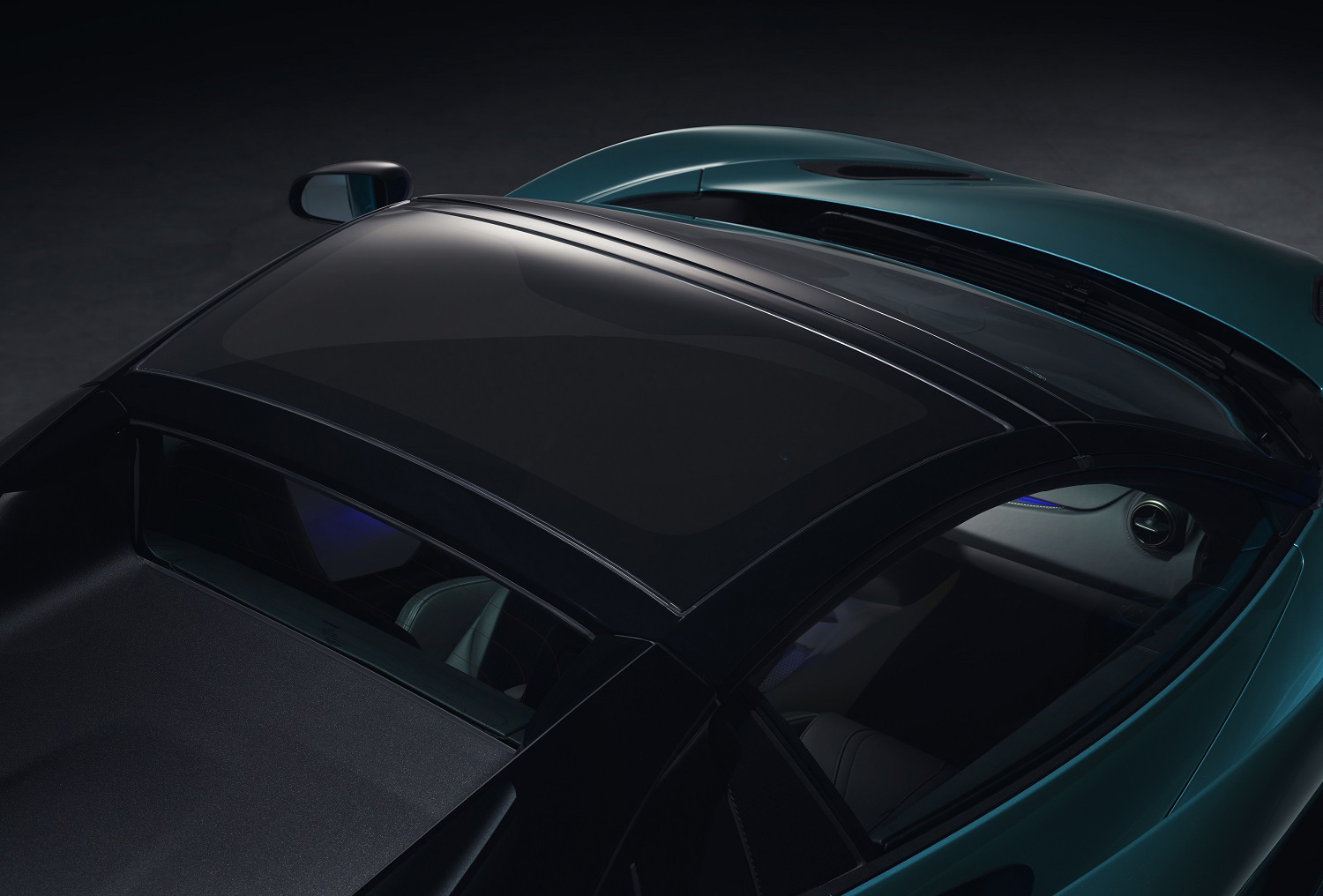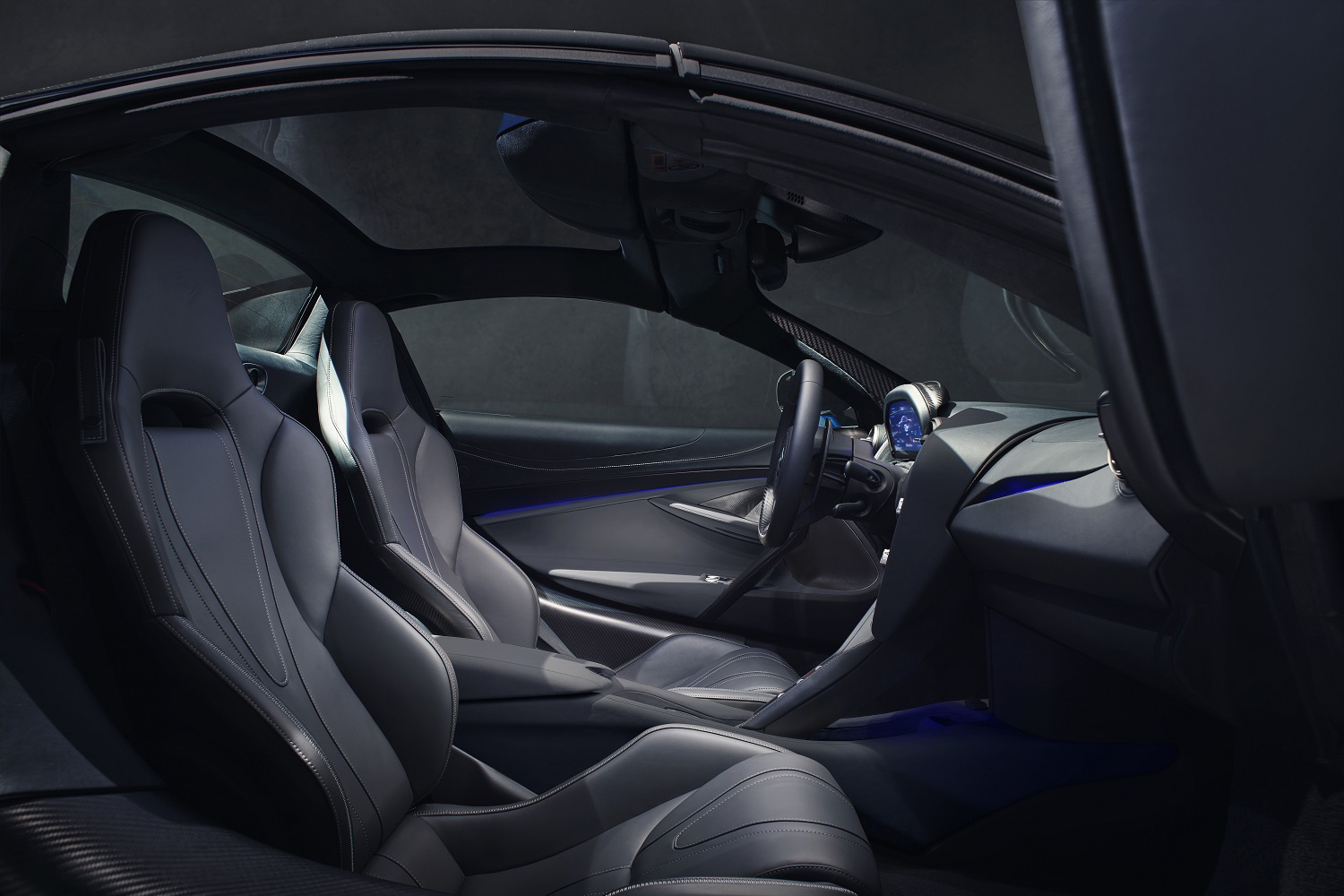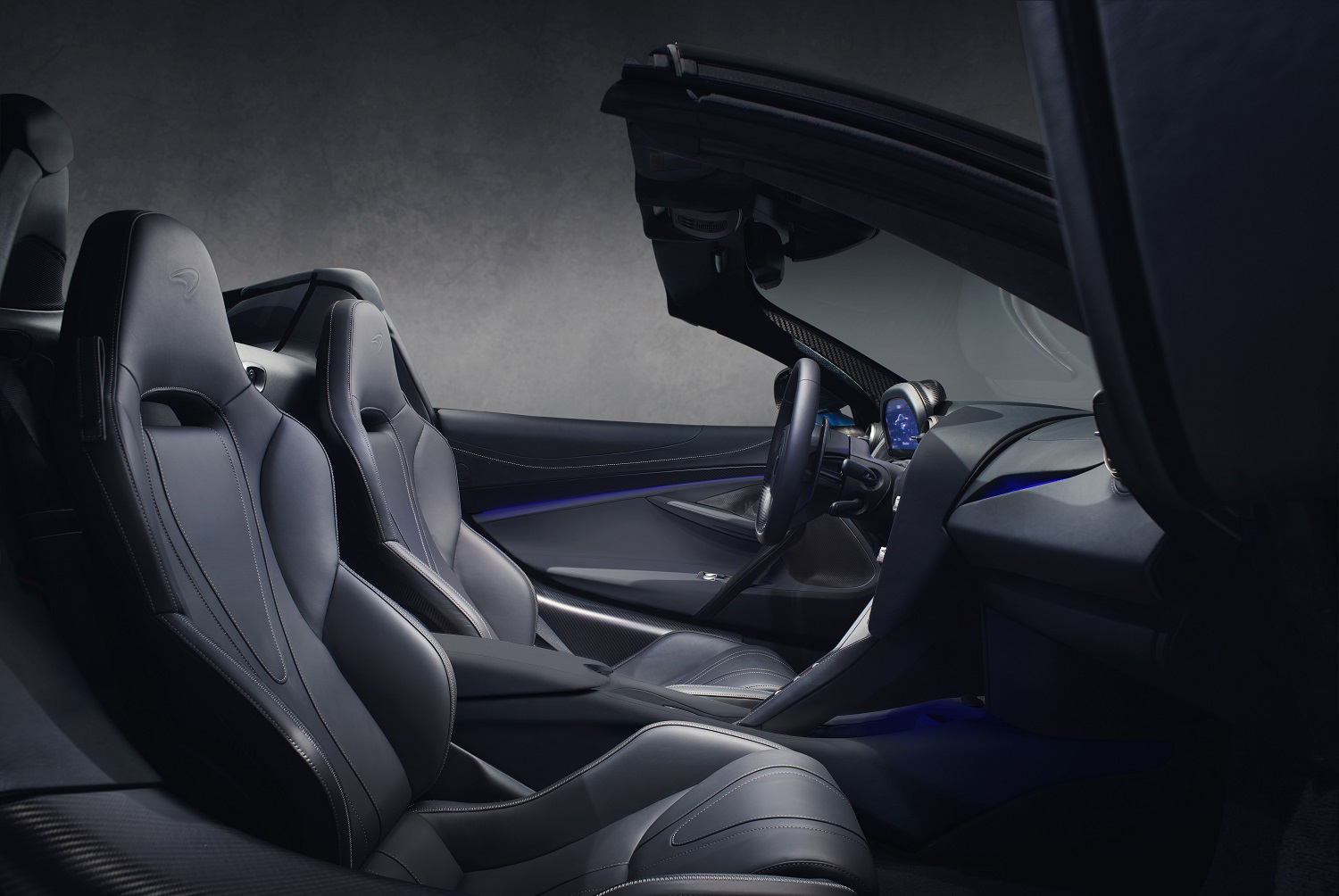McLaren has introduced the 2019 720S Spider, a drop-top version of the 720S. It promises to deliver the wind-in-your-hair experience convertible enthusiasts seek while achieving the same level of dynamism as the coupe model introduced in 2017. How? Carbon fiber, and lots of it.
Chopping off a car’s top normally reduces rigidity. McLaren largely solved that problem by building the Spider around an evolution of the 720S‘ carbon fiber core. It’s extremely light yet strong; the bottom part of the cell required no additional strengthening. Instead of a cloth soft top, McLaren fitted the Spider with a retractable hard top also made out of carbon fiber. Going topless is as simple as pressing a button and waiting for 11 seconds. Motorists can open or close the top at speeds of up to 31 mph.
The top and its mechanism add 108 pounds to the 720S, according to McLaren. Dry and in its lightest configuration, it tips the scale at 2,937 pounds.
Settle into the driver’s seat and you’ll find the same minimalist cabin design introduced by the 720S coupe. McLaren installed an eight-inch touchscreen for the infotainment system. It also replaced the analog instrument cluster by an elegant digital display that provides a wide variety of information including the speed, the engine’s revolutions, the temperature of the coolant and the oil, plus data about the trip. Drivers who want to focus on the road ahead can fold the screen out of the way to reveal a display that’s much smaller and more basic.
The Spider retains the 720S’ heart. It’s a twin-turbocharged, 4.0-liter V8 engine tuned to produce 710 horsepower at a screaming 7,500 rpm and 568 pound-feet of torque from 5,500 to 6,500 rpm. Mounted right behind the passenger compartment, the eight-cylinder spins the rear wheels through a seven-speed automatic transmission. It endows the 720S Spider with the jaw-dropping performance you’d expect from a supercar.
The sprint from zero to 60 mph takes 2.8 seconds, which is on par with the coupe. That’s impressive; normally, convertibles are a little bit slower than coupes because they’re heavier. If you plan on driving on a track, rest assured the 720S Spider sprints from zero to 186 mph in 22.4 seconds. Alternatively, it brakes from 124 mph to a full stop in 4.6 seconds, or 387 feet. Top speed checks in at 202 mph with the top down or 212 mph with the top up.
McLaren will begin delivering the 2019 720S Spider in March 2019. Pricing starts at $315,000.
Editors' Recommendations
- Bowers & Wilkins and McLaren launch special-edition Px8 headphones
- McLaren applies F1 tech to health care, air-traffic control, Wi-Fi, and athletics
- This electric mini McLaren will ensure your kid has a cooler ride than you
- McLaren’s next supercar will focus on comfort as well as performance

